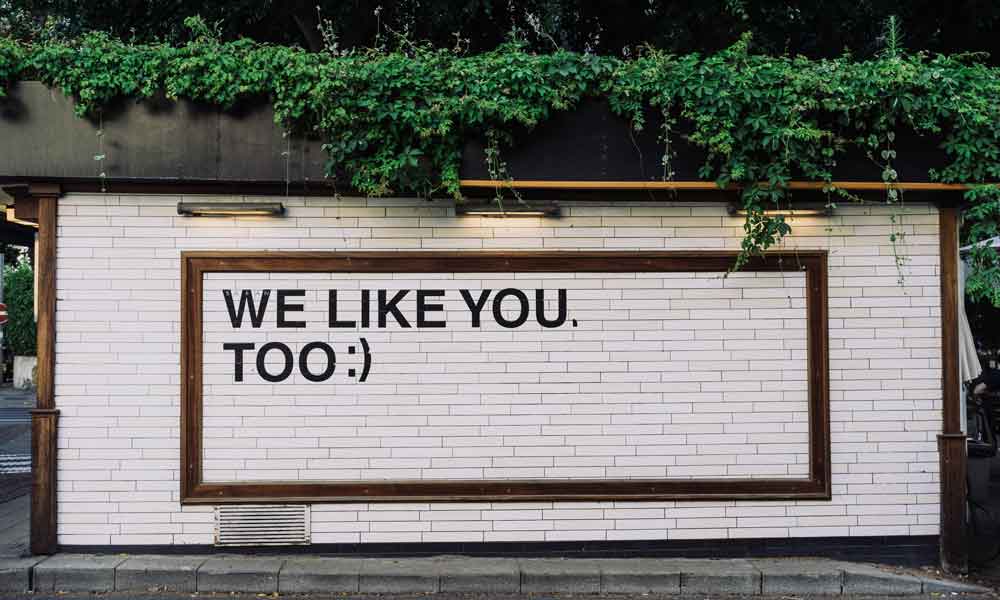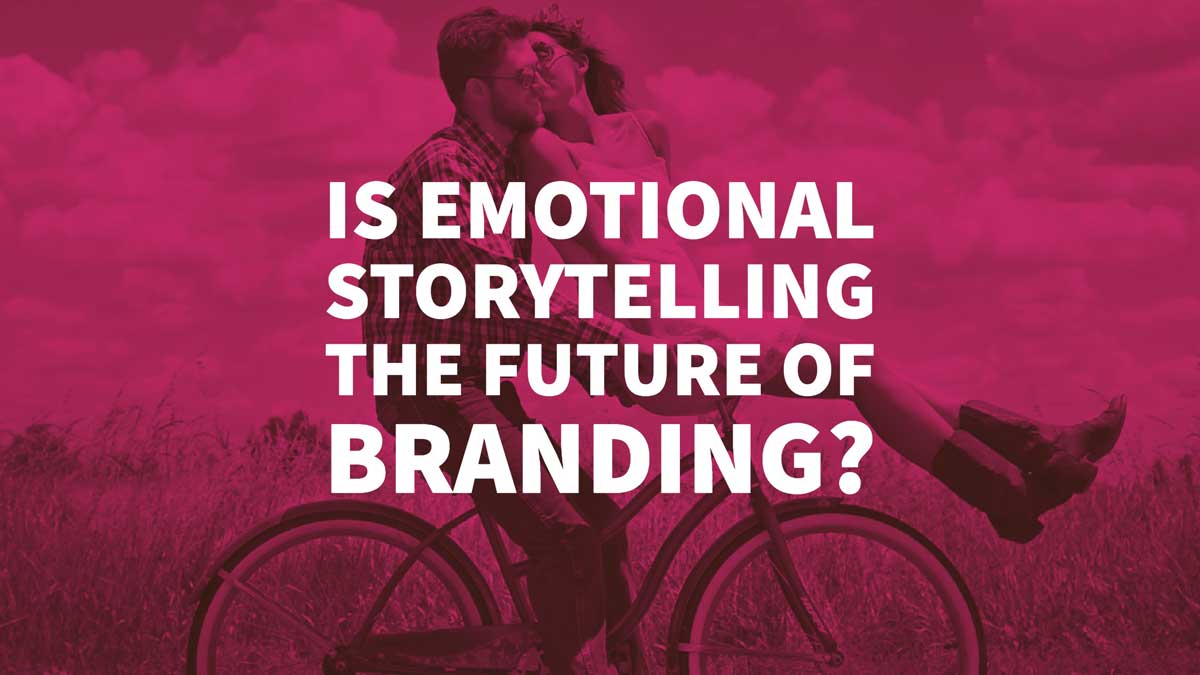
09 Mar Is Emotional Storytelling the Future of Branding?
Emotions and brands might now seem like a natural fit.
All the same, all the successful brands know that to keep their customers loyal and their name secure, their primary concern is to appeal to their emotions – with emotional storytelling.
This comes out of a whole host of research in the last few decades which shows that we do not make decisions logically but make them emotionally.
In fact, it now seems that we use our rationality only to find arguments which defend the emotional position we took.
So we do not work as judges, weighing the pros and cons of the case.
Instead, we work more like lawyers.
We take a position and then find arguments which support that view.
For that reason, if you want people to buy your brand, the best approach is to appeal to them emotionally first, so that they like what you are doing.
Then, when you offer them the features and the benefits, they will be well disposed towards what you have got to sell.
One of the best ways to make that connection is through emotional storytelling.
What is emotional storytelling?
Emotional storytelling is about creating a feel-good story and slotting your brand into that experience.
For example, in one P&G commercial, they show how children fall down and how mothers pick them back up again.
This keeps going until they don’t fall down at the Olympics and end up winning.
Then P&G throws itself in at the end as the supporters of moms.
This commercial very effectively combines many things we all love.
We love babies, we love underdogs ending up winning in the end, and we love it when those people who usually don’t get the attention they deserve suddenly do.
In this commercial, these things have been mixed together to create a powerfully positive emotional state, which is then associated with the brand.
The funny thing is, it does not really matter that the brand is only indirectly relevant.
The creators cleverly sidestep that by pretending it is indeed a story about them supporting moms.
Of course, it is nothing of the kind.
It is all about creating a positive relationship in the viewer’s brain with emotional storytelling.
However, most viewers do not realise and even those that do don’t mind, as they just got told an uplifting and enjoyable story.
Why does Emotional Storytelling work?

Human beings are association and pattern finding machines.
Show us a series of unrelated events, and we will still try to create a story out of them and connect them – even if the connection is entirely non-existent.
This is why putting a beautiful woman next to a car means people will buy more cars.
Consciously they are not even aware that they have associated the two.
They may also deny it.
Nonetheless, the proximity of the two creates a connection.
Buy this car and beautiful women will flock to you.
Brand storytelling does the same.
It connects the brand to the positive emotions that people are feeling.
Repeat this connection often enough and, by the neurological process of neurons that fire together wire together, the feeling becomes associated with the brand.
Avoiding the argument

Even better, because you’re not proposing an argument, there is nothing for the viewer to argue against.
Sure, if it is too blatant then they might resent the manipulative attempt, but as long as that can be avoided, they can’t say ‘no’ as there is nothing to say ‘no’ to, as there often is in other commercials.
You can say ‘no’ to whether a washing powder makes your clothes whiter than white.
But how can you say ‘no’ to ‘thank you mom’?
Similarly, by placing a brand in a video as part of people having a good experience, it again becomes difficult to argue against.
You are not saying ‘we give this good experience’ instead, it is more like they are giving it to themselves, and your brand just happens to be part of that picture.
So what positive emotion should you go for?

Interestingly, when most of us think of positive emotions, then we think of happiness or love.
The truth is, however, that there are quite a few more, almost all of which can effectively be used to create an emotional story that can be associated with your brand.
A non-conclusive list from the positive psychology movement gives us these:
Joy – the feeling of happiness which ranges from gentle comfort to ecstatic bliss. This is the one that most people say they are after. It is, however, only the first.
Gratitude – feeling gratitude to somebody or something can also be an incredibly happy experience. Expressing gratitude creates joy both in the expresser and those around them.
Serenity – calmness and being content with our situation is another great positive emotion. Often serenity is seen as a ‘higher’ emotion, as it is connected to spiritual bliss.
Interest – not commonly recognised as an emotion but one nonetheless, interest is a charming, positive feeling that can keep us focused on one thing to the exclusion of everything else for hours or even days.
Hope – the anticipation of happiness is an intense emotion that keeps us going through the tough times. It is therefore also appealing to people who are not experiencing any of the other positive feelings at this point.
Pride – the bible gives pride a bit of a bad name. For in truth, small amounts of pride are not wrong. You just have to be a parent watching their child graduate, a part of a team that created an outstanding product or a fan of a successful sports team to know the truth of that.
Amusement – We love to laugh, and a well-told joke can break the ice and create strong positive associations.
Inspiration – the reason we listen to people who are successful and buy the biographies of famous people is for the sake of inspiration (And possibly imitation).
Awe – a beautiful sunset, a phenomenal musical performance or anything else genuinely outstanding can awaken a sense of awe. When it does, there is nothing quite like it (and nothing that gets shared quite as much on the internet).
Love – the second emotion I mentioned right at the beginning. Love can be both felt towards a specific person, a place, or a concept. We can also often appreciate the love of others.
Altruism – Helping other people makes the helper happy. Seeing other people being helped has a similar effect. This is in part related to the showing of gratitude on the part of the receiver.
Satisfaction – when you successfully meet a challenge or achieve a goal, you feel satisfied.
Relief – The sensation of feeling that we have managed to dodge a bullet can be quite profound. Sometimes it can leave you entirely overwhelmed.
So which of these emotions should you actually use?
That is a big question.
The great thing about positive emotions is that it is tough to choose the wrong one.
Some brands might not go as well with one positive emotion than the other.
Even then, however, rare is the occasion where you would not want your brand associated with these feelings when they see it in the shop.
The next step

The trick is to identify the best emotions that will work with your brand and then start working these into your branding.
This can be done far more easily than you might suspect.
For example, if you have employees who feel inspired by something and that is what you want to associate your brand with, then letting them tell their stories (possibly with an essay writer on call to really make their content pop) can be enough.
The reason this works is that though it is housed on your brand’s page and your company is mentioned, this is not the centre of attention.
This will have several advantages.
For one thing, your brand will be non-intrusive which will make it far more likely people will share what they are reading across their social networks.
A second advantage is that even if it does not work quite as well as you would hope, you can easily tweak the formula.
Perhaps another person has something to say that is inspiring differently, or maybe you can use a different positive emotion.
Do this often enough with gripping, emotional storytelling, and you might even be able to generate a following just through that.
After all, who does not like the occasionally well-presented pick-me-up?
Last words on the Future of Branding

As is always the case with these types of approaches, sooner or later they will be over-exploited.
At that point, people will probably become as jaded towards emotional storytelling as they have grown to nearly every other form of marketing out there.
The good news, however, is that we’re not there yet.
Emotional storytelling is still fairly new.
What’s more, those that are engaging in it are still doing so poorly.
They are focused on creating solid connections between the emotions and their brand and therefore giving viewers and customers a chance to say ‘no’ to what they are doing.
As we have covered, that is not necessary.
All that has to be done is put them on the same page together.
Our brains will do the rest.




